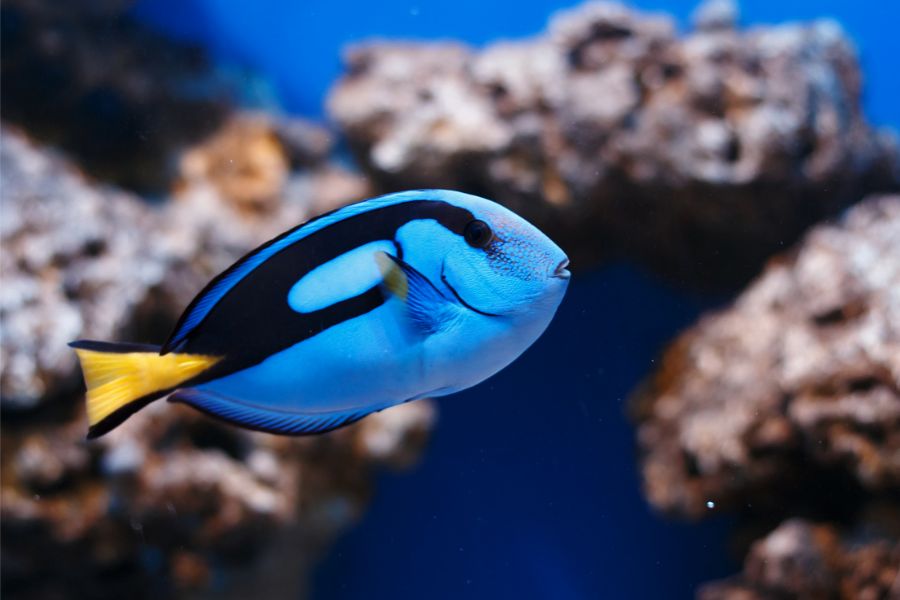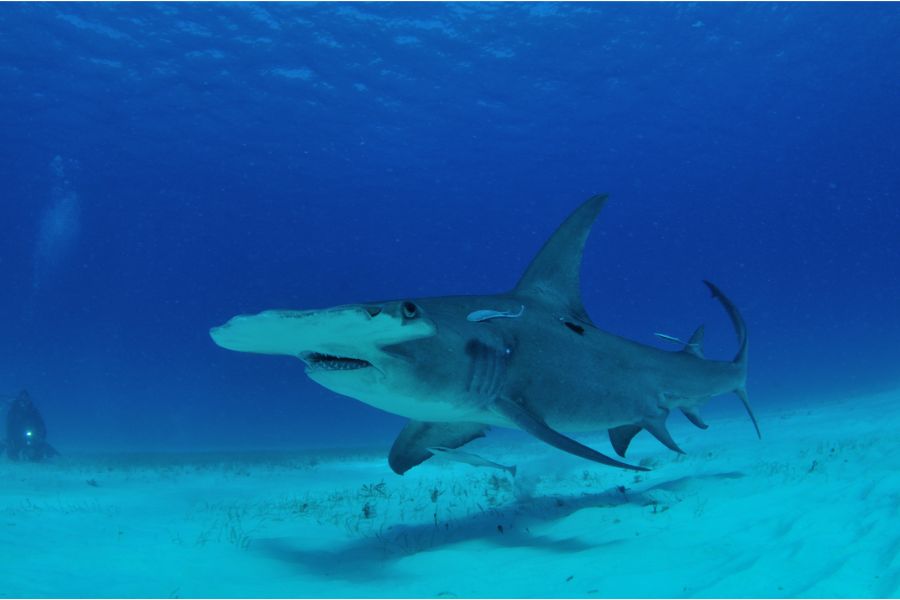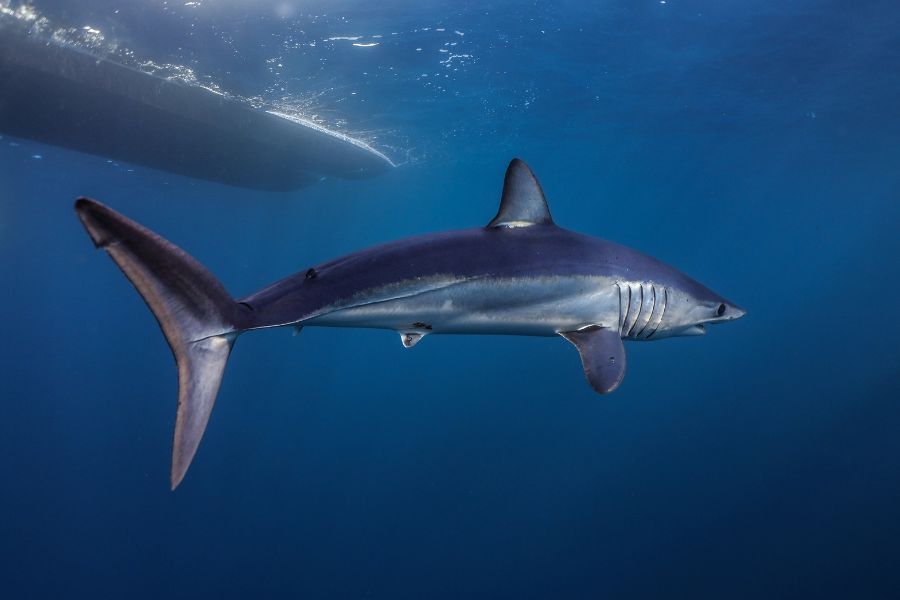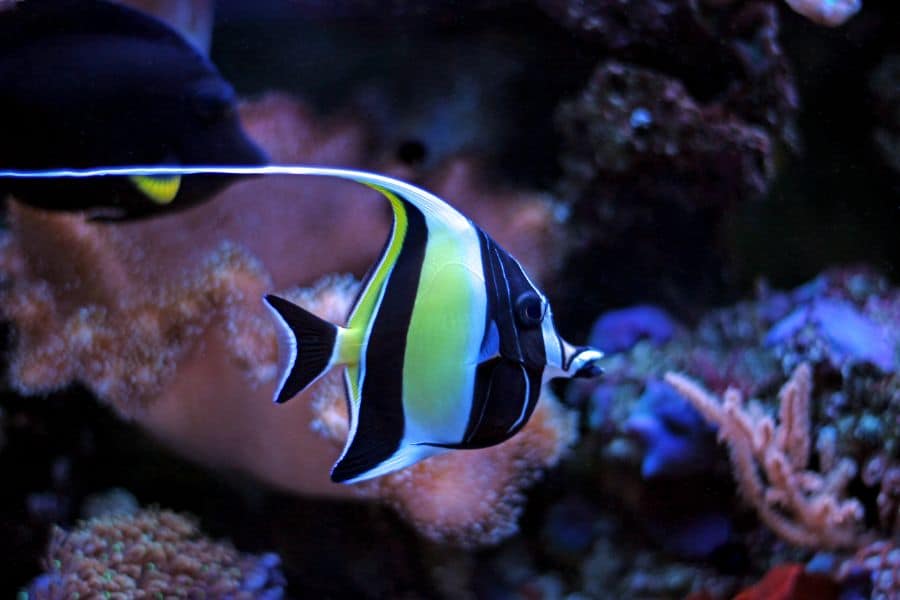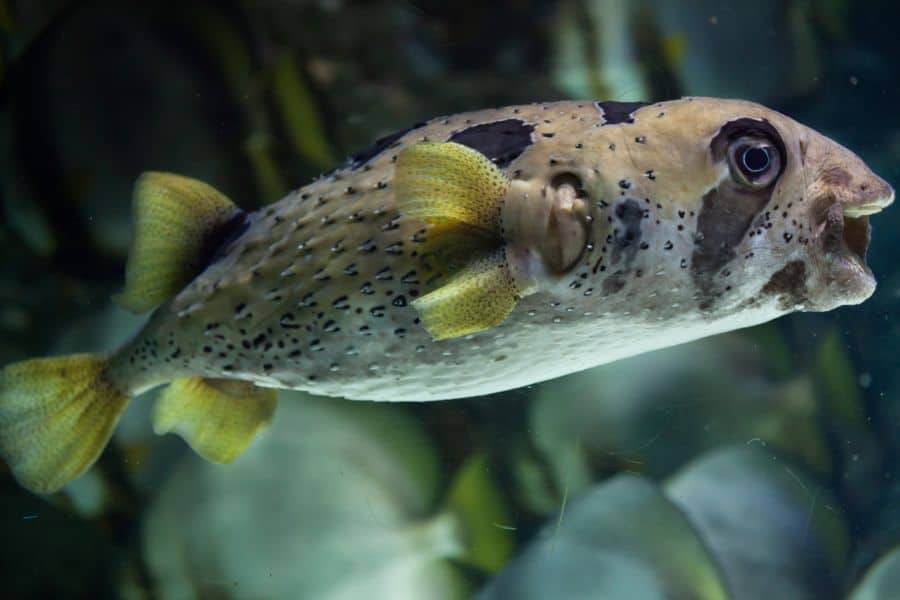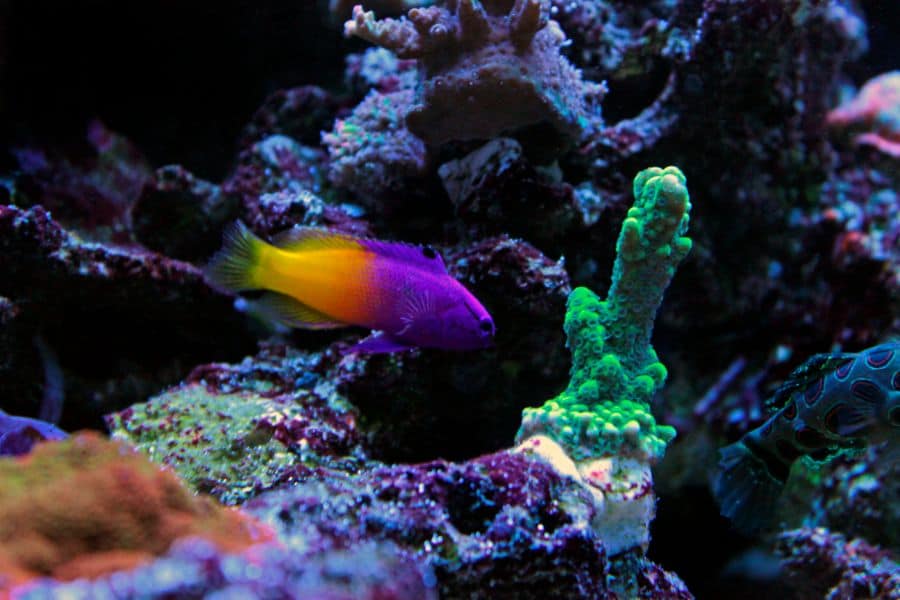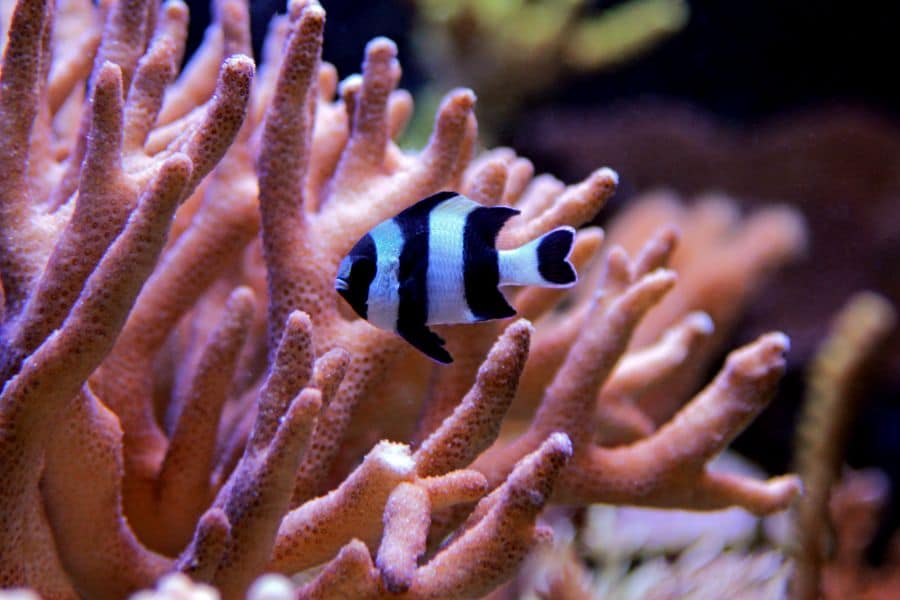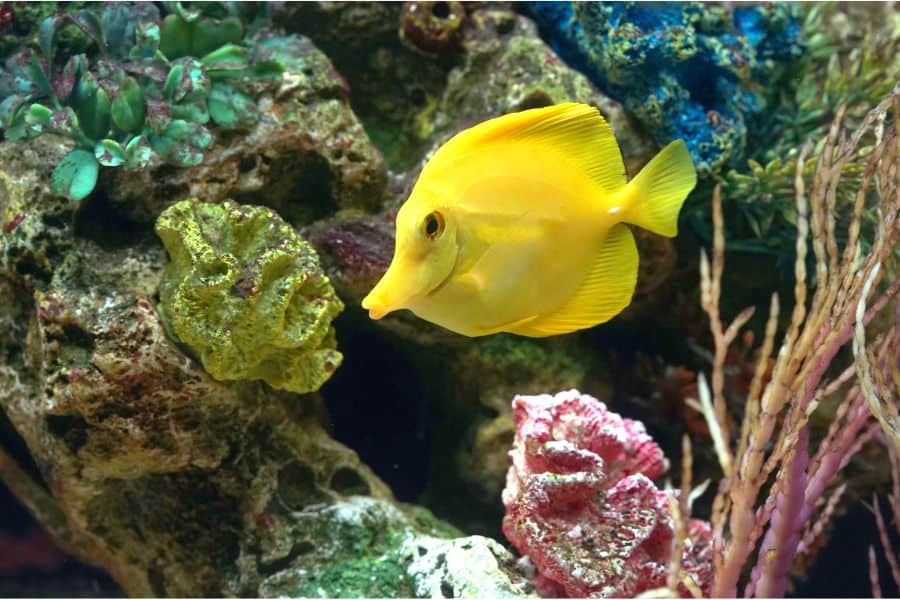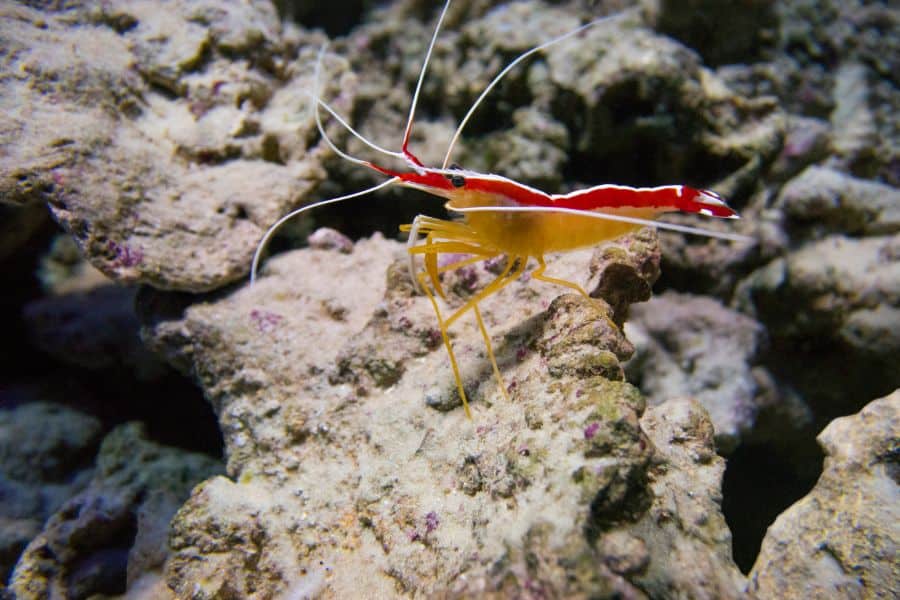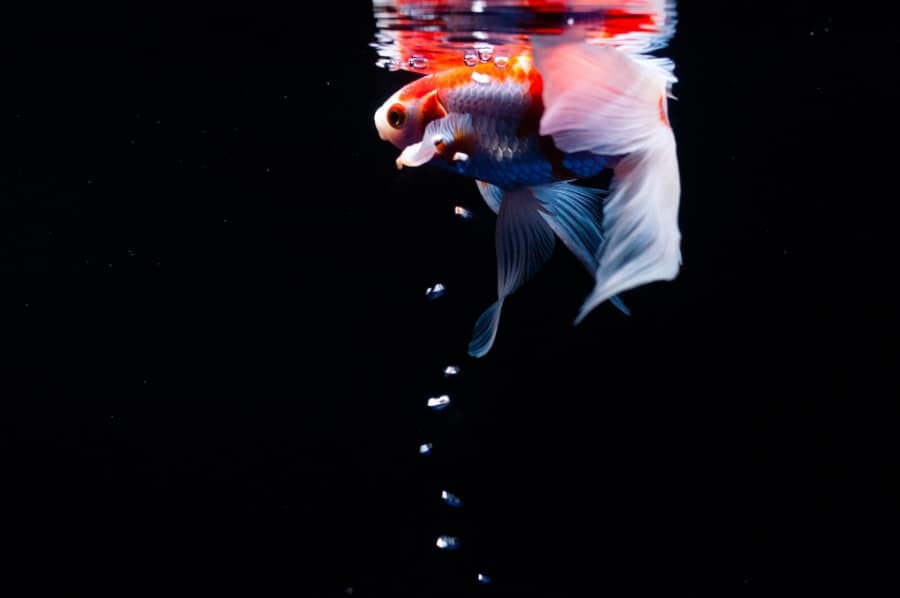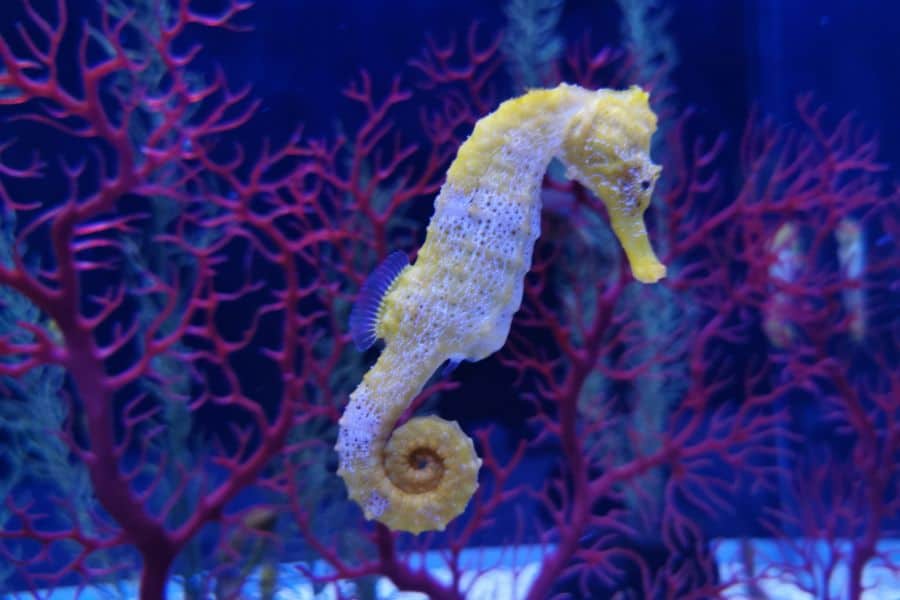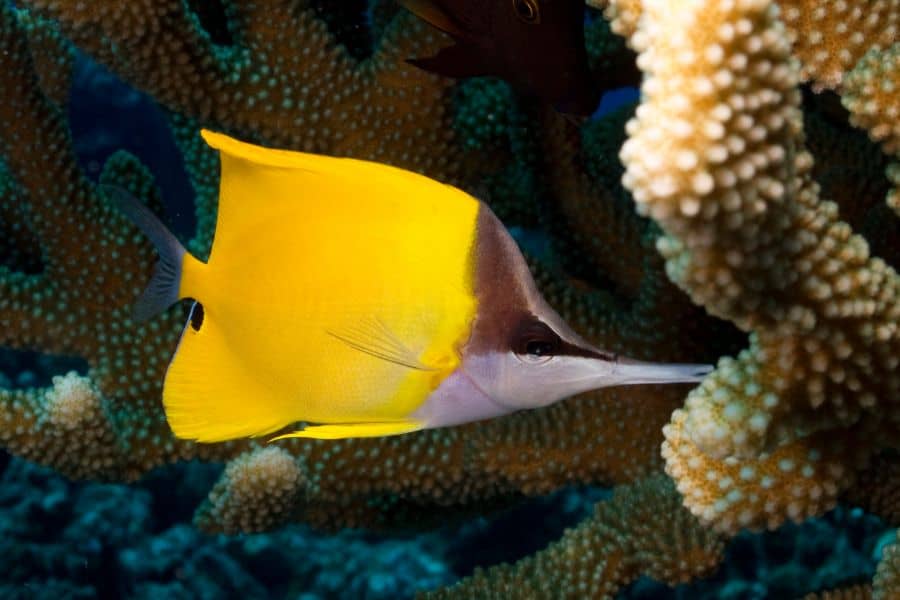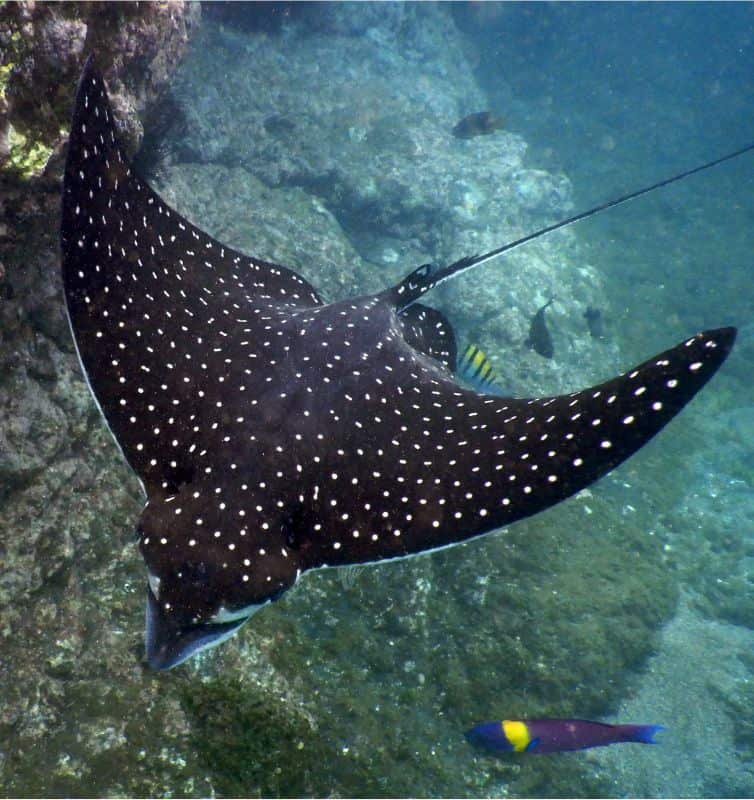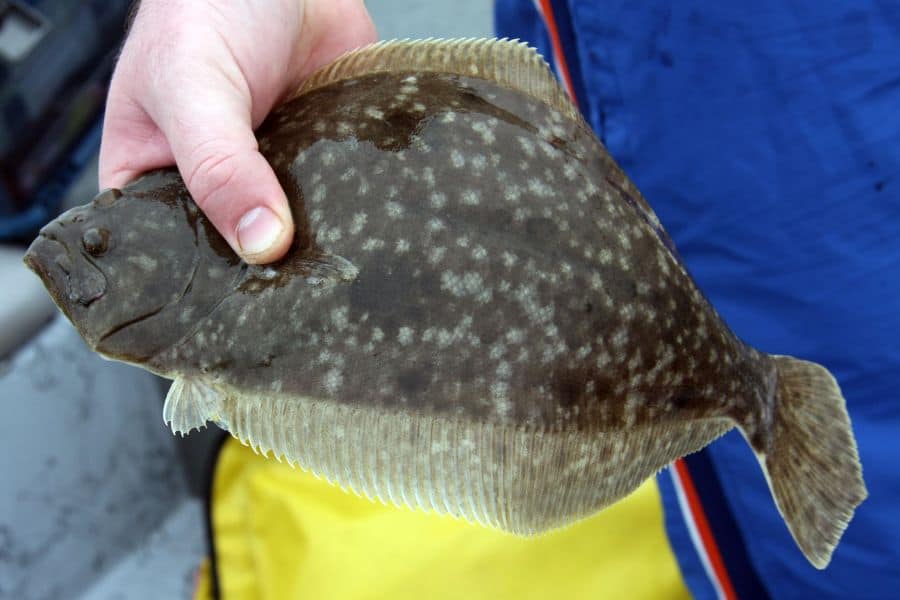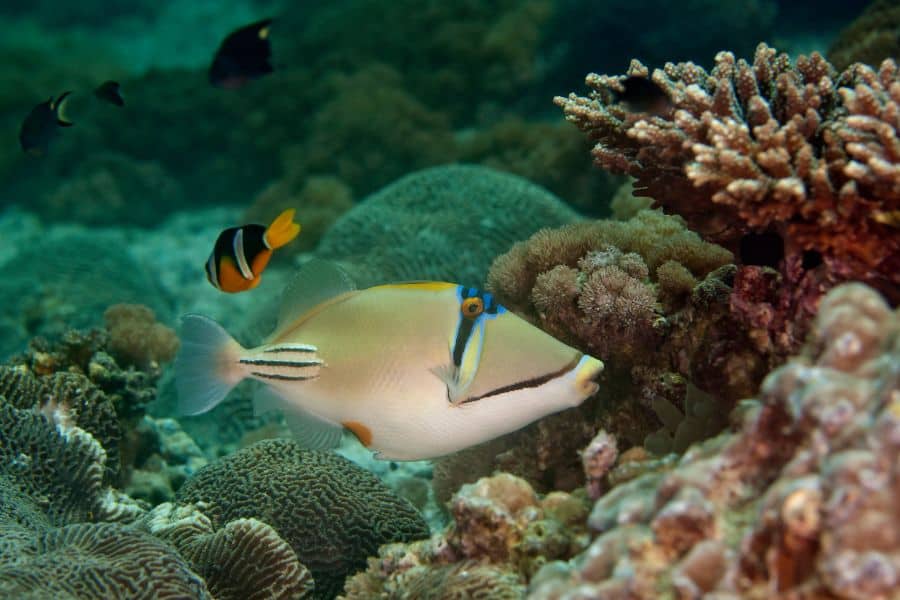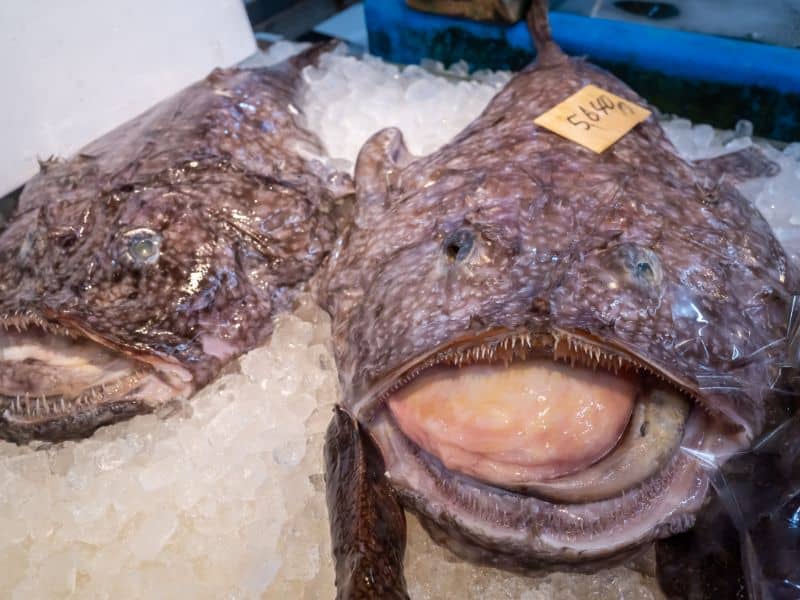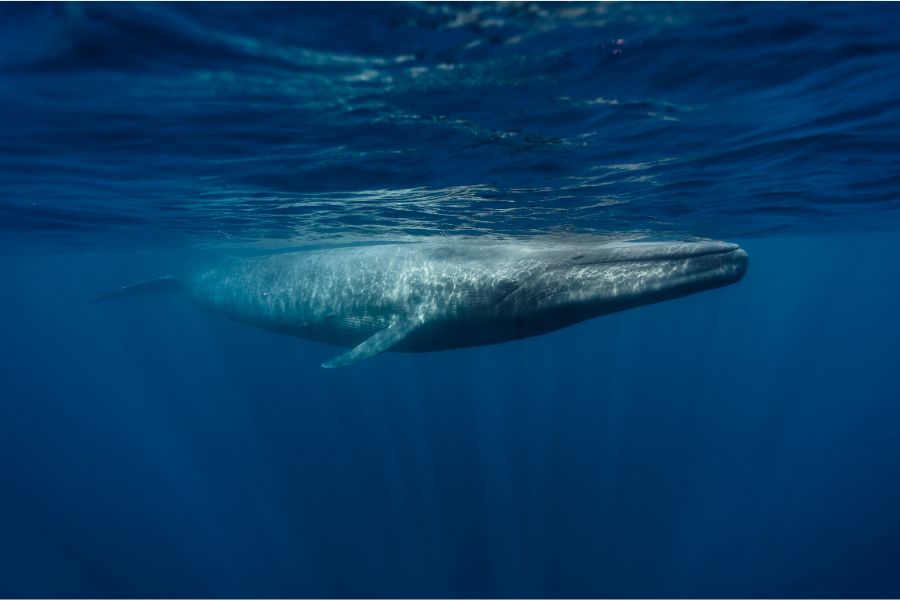For many aquarists, Finding Nemo holds a special place in their hearts. Despite the film’s intended message, this 2003 Pixar movie sparked an entirely new generation of ocean lovers, aquarium enthusiasts, and, ironically, fish keepers.
Not that it’s a surprise, considering the colorful characters, heart-warming story, and beautiful background set in the South Pacific Ocean, featuring Australia’s Great Barrier Reef.
That said, you may be curious about all the aquatic creatures in the film. Don’t worry, we’ve got your back. In this post, we’ve got a full list of species you can find in Finding Nemo!
What’s the Story of Finding Nemo?
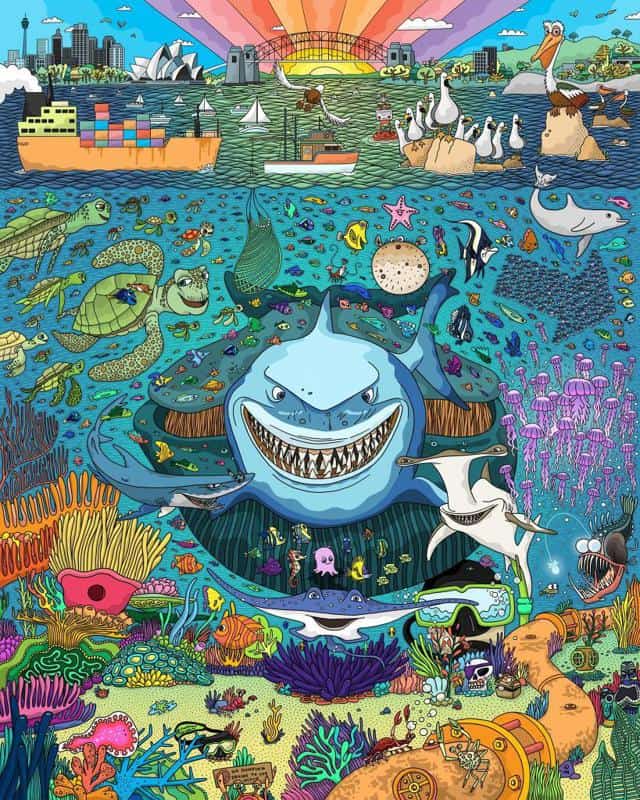
Finding Nemo tells the story of the eponymous Nemo, a young clown fish who wants nothing more than to escape from the loving yet suffocating grasp of his overprotective father, Marlin.
The father and son duo are the only survivors of a brutal predator attack that happened when Nemo was only an egg, killing Marlin’s wife, Coral, as well as all their eggs. Luckily, one egg remained – a cracked one, leaving the fry with a deformed fin.
Because of this, Marlin is scared of everything, obsessed with protecting the now-hatched Nemo from the world. Nemo, on the other hand, has never understood his father.
One day, Marlin’s fears become realized. A diver takes Nemo away as a horrified Marlin watches, arriving just a second too late. He speeds off, trying to follow the diver’s boat, but it disappears into the horizon.
This is where the real story begins.
Marlin, refusing to give up, decides to go on a dangerous mission to find his son. He gets help from several new friends along the way, including his new sidekick, Dory.
Eventually, they manage to track down the diver who took Nemo: P. Sherman at 42 Wallaby Way, Sydney. It turns out he’s a dentist with one hobby we’re all familiar with: aquariums.
In the end, Marlin does get Nemo back, and their relationship is now stronger than ever. With the newfound courage from his adventure, Marlin learns to trust Nemo more. And Nemo, with a new appreciation for his father’s love, finally understands.
25 Finding Nemo Characters and Their Real-Life Species
Finding Nemo is definitely a memorable movie, but have you ever wondered what species Marlin and Nemo met on their adventures?
Here are the fun, wacky, and certainly interesting characters from Finding Nemo.
1. Ocellaris Clownfish – Nemo and Marlin
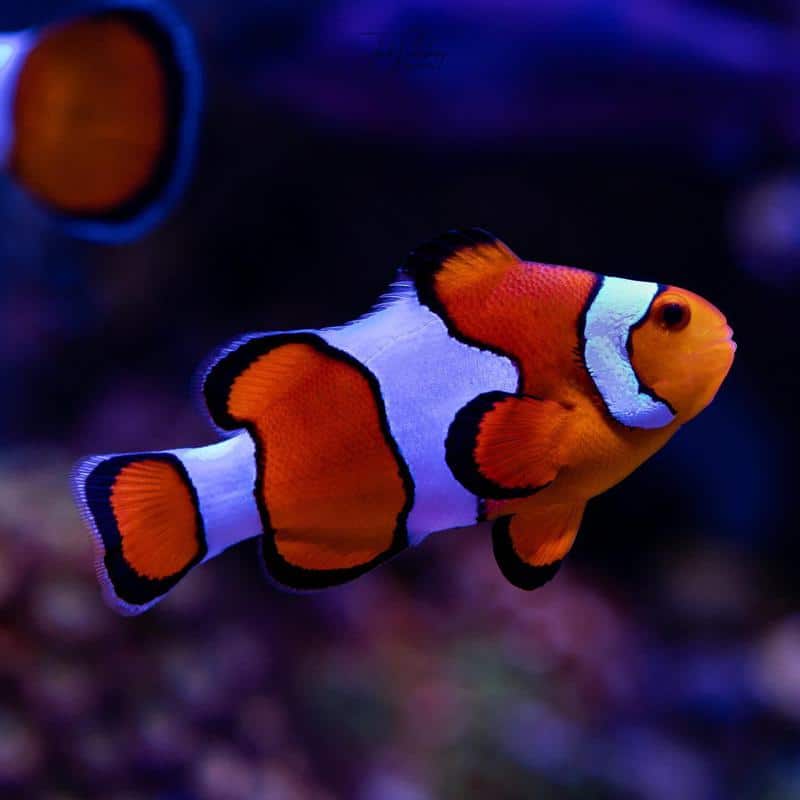
- Scientific name: Amphiprion ocellaris
- Other names : Anemonefish
- Suitable for aquariums: Yes
- Minimum tank size: 20 gallons
Finding Nemo revolves around the clownfish father and son, Nemo and Marlin.
Take note, there are more clownfish colors and patterns than just orange and three white stripes. This specific subspecies is called Amphiprion ocellaris , and it’s arguably the most famous one.
These charming fish are not only visually captivating but also relatively easy to care for, making them a popular choice among aquarium enthusiasts. They don’t need a very large tank and also don’t have specific dietary requirements.
Ideally, you’ll want to pair your clownfish with their preferred homes: anemones.
Clownfish really do have a symbiotic relationship with anemones , which means your clownfish will benefit from having one around. However, anemones are harder to take care of since you’ll need at least 50 gallons to make sure they’re healthy.
If you’re up for a challenge though, you can’t go wrong with this combination.
2. Pacific Blue Tang – Dory
- Scientific name: Paracanthurus hepatus
- Other names : Regal Blue Tang, Blue Surgeon, Blue Hippo Tang, Flagtail Surgeonfish
- Suitable for aquariums: Yes, expert
- Minimum tank size: 100 gallons
Dory is the happy-go-lucky yet forgetful fish that Marlin bumps into while he’s rushing to follow the boat of the diver that took Nemo.
Her real-life counterpart, the Pacific Blue Tang, is highly sought after by aquarium enthusiasts, particularly those who prefer vibrant reef tanks.
That said, although they’re a captivating addition to any marine aquarium, they’re really not recommended for beginners.
They’re known for their sensitivity and susceptibility to diseases, which makes them more suitable for aquarists with plenty of experience and a deep understanding of saltwater aquarium maintenance.
3. Hammerhead Shark – Anchor
- Scientific name: Sphyrna mokarran
- Other names : NA
- Suitable for aquariums: Yes, but not home aquariums
- Minimum tank size: 700,000 gallons
Anchor is the hammerhead shark that’s part of the “Fish are Friends, Not Food” support group.
Hammerheads are easily one of the world’s most iconic and recognizable types of sharks. There are nine known species, many of which call coastal waters their home.
Sadly, many hammerhead shark species are considered endangered in their natural habitats. This is mainly caused by the shark fin trade, which places high value on the hammerhead’s large fins.
However, conservation efforts are currently underway. Many public aquariums are starting to care for and breed hammerheads in the hopes of seeding the wild population.
4. Great White Shark – Bruce
- Scientific name: Carcharodon carcharias
- Other names : Great White, White pointer, White shark
- Suitable for aquariums: No
- Minimum tank size: NA
Bruce is the ferocious yet friendly leader of the “Fish are Friends, Not Food” support group.
In the wild, great white sharks like Bruce are notorious for being fearless hunters. These majestic creatures, which can grow up to 19 feet in length and weigh over 6,000 pounds, travel great distances just to capture prey.
In fact, that’s one of the many reasons why you won’t find great whites in public aquariums. A number of aquariums have tried before, but the longest record is only 198 days.
Great white sharks will suffocate if they don’t constantly swim at high speeds. They also display stress symptoms when captured. Many will simply stop eating, even when fed the best diets the aquarium can provide.
That said, wild great whites typically don’t go for smaller fish like Marlin and Dory in the film. Instead, they prefer a more nutritious diet that includes seals, dolphins, and even small whales.
Interestingly, Bruce’s line about never knowing his father is real – great white sharks don’t care for their young. That’s because great whites are a precocial species, which means their babies hatch ready to take on the world.
5. Shortfin Mako Shark – Chum
- Scientific name: Isurus sp.
- Other names : Blue pointer, Bonito shark
- Suitable for aquariums: No
- Minimum tank size: NA
The last member of the “Fish are Friends, Not Food” support group, Chum is a very hyper mako shark.
This is actually quite fitting since mako sharks, particularly the more common shortfin makos, are known to be the fastest shark species in the whole world. They can swim up to 35 mph, with a short burst speed of 50-60 mph.
However, unlike the film, mako sharks are actually solitary creatures and would definitely not befriend a hammerhead and a great white.
Sadly, mako sharks are currently endangered due to human activities like overfishing . Sadly, it seems like even the fastest swimmer in the ocean is no match for the great danger that is the human race.
6. Moorish Idol – Gill
- Scientific name: Zanclus cornutus
- Other name : Morishidols, Monish idols
- Suitable for aquariums: Yes
- Minimum tank size: 100 gallons
Gill is the brave leader of the Tank Gang, which Nemo met after the diver took him to live in his dental office’s saltwater aquarium.
Unlike the other members of the gang, he was originally caught in the ocean, just like Nemo. He’s got a lot of scars as well as a damaged fin from his failed escape attempts.
This is likely a nod to Gill’s real-life species, the Moorish Idol.
Although Moorish Idols can live in a home aquarium, they’re actually known to be very difficult to keep. They need a minimum of 100 gallons, can be very aggressive towards tank mates, and are also known to destroy tank decor.
You’ll need to be an experienced fishkeeper if you want to try caring for this feisty marine species – so perhaps Dr. P. Sherman is probably more experienced in fishkeeping than it seems.
7. Porcupine Puffer – Bloat
- Scientific name: Diodon holocanthus
- Other name : Blotched porcupinefish, Long-spine porcupinefish, Spiny puffer, Balloon porcupinefish
- Suitable for aquariums: Yes
- Minimum tank size: 100 gallons
Bloat is a member of the Tank Gang. He’s quite friendly but tends to inflate when his temper runs short. When this happens, the other members have to help him deflate, as he has trouble doing so by himself.
This is partly true, as Bloat’s real-life counterparts, porcupine pufferfish, can also find it hard to deflate depending on where they inflated. If they inflate near the surface, they can gulp air, making it extremely hard to deflate and even leading to their death.
In terms of aquarium care, they’re also not the easiest to keep. Due to their size and messy eating habits, porcupine puffers need at least 100-200 gallons of water and a powerful filtration system.
Additionally, porcupine puffers’ teeth never stop growing, so they need a constant diet of hard food like shells, mussels, clams, and the like, which some aquarists may find difficult to provide.
8. Starfish – Peach
- Scientific name: Pisaster brevispinus
- Other name : Pink sea star, Giant pink sea star, Short-spined sea star
- Suitable for aquariums: Starfish, yes; Peach’s species, no
- Minimum tank size: 50 gallons
Peach is the pink starfish member of the Tank Gang who serves as the gang’s lookout for the dentist.
In the film, Peach has recognizable eyes and a mouth. But in reality, most starfish don’t have that.
Instead of eyes, they have eyespots at the end of each arm that help them detect light, and instead of mouths, they have a hole at the center of their undersides where their stomachs come out to devour their slow-moving prey.
You can keep starfish in a saltwater aquarium, but the species Peach was likely based on, the pink sea star, isn’t home aquarium-friendly. They’re small as babies but can grow huge, reaching up to 3 feet long.
9. Yellow Royal Gramma – Gurgle
- Scientific name: Gramma loreto
- Other name : Fairy basslet
- Suitable for aquariums: Yes
- Minimum tank size: 30 gallons
Gurgle is a member of the Tank Gang who’s extremely concerned about cleanliness.
In the wild, yellow royal grammas are vibrant reef fish that are quite timid, preferring to live in caves and other hiding spots. They usually only emerge to feed on zooplankton and crustaceans.
Keeping one in your saltwater aquarium shouldn’t be hard. They’re small, hard, and generally peaceful, which means they’ll make great additions to a community tank. Just make sure to give them ample space, as they can sometimes fight with other fish over territory.
That said, unlike Gurgle in the film, royal grammas don’t change color based on their emotions. Juveniles may change color when they go into adulthood, but other than that, they should stay the same color throughout their lives.
10. Striped Damselfish – Deb
- Scientific name: Dascyllus melanurus
- Other names : Four stripe damselfish, humbug damselfish, blacktail dascyllus, blacktail damselfish, blacktail humbug
- Suitable for aquariums: Yes
- Minimum tank size: 30 gallons
Deb is a member of the Tank Gang who believes that her reflection on the tank glass is her twin sister named Flo.
However, while Deb is sweet and friendly, her real-life counterpart isn’t. Four-striped damselfish are a common sight in aquariums, but they’re far from beginner-friendly.
They can be quite aggressive, often fighting with their tank mates over the smallest things. And though they can survive in 30 gallons, they need a much larger tank to prevent territorial behavior.
If you’re a beginner, it’s better to look at other damselfish species, such as Springer damselfish or Azure damselfish.
11. Bright Yellow Tang – Bubbles
- Scientific name: Zebrasoma flavescens
- Other name : Yellow tang, Yellow sailfin, Lemon sailfin
- Suitable for aquariums: Yes
- Minimum tank size: 125 gallons
Bubbles is a member of the Tang Gang who’s obsessed with catching bubbles, not knowing that it’s impossible to keep them.
In reality, bright yellow tangs are just as hyper as Bubbles. They’re a highly active species that are known for being extremely hardy.
They’re pretty easy to keep in terms of care but not when it comes to tank requirements. These beautiful fish need to be housed in a tank of at least 125 gallons and 6 feet long just to accommodate their active behavior.
Also Read: Most Popular & Beautiful Tang Fish Types
12. Pacific Cleaner Shrimp – Jacques
- Scientific name: Lysmata amboinensis
- Other name : Skunk cleaner shrimp
- Suitable for aquariums: Yes
- Minimum tank size: 20 gallons
Jacques is the strict shrimp with a French accent who lives in the dentist’s tank.
His real-life species, the Pacific cleaner shrimp, is just as meticulous as he is. In fact, these shrimp don’t just eat algae. They also offer their cleaning services to various marine fish, providing a helping hand in removing parasites, cleaning teeth, and tending to wounds.
You can keep them in your aquarium as algae cleaners, but we have to note that there are some conservation-related concerns regarding this species. They’re very difficult to breed in captivity, meaning most specimens sold today are wild-caught.
13. Goldfish – Chuckles
- Scientific name: Carassius auratus
- Other name : NA
- Suitable for aquariums: Yes, freshwater
- Minimum tank size: 10 gallons for 1 fish
Chuckles is a former resident of Dr. Sherman’s tank, but he died after being given to the dentist’s naughty niece, Darla, who apparently wouldn’t stop shaking the plastic bag.
Let’s get one thing out of the way first: goldfish don’t belong to saltwater aquariums. They don’t tolerate high salinity levels very well. Instead, goldfish should be housed in freshwater aquariums of at least 10 gallons per 1 fish.
Looks like Darla shaking the bag wasn’t Chuckles’ true cause of death, after all!
14. Green Sea Turtle – Crush and Squirt
- Scientific name: Chelonia mydas
- Other name : NA
- Suitable for aquariums: No
- Minimum tank size: NA
Crush and Squirt are the father-and-son green sea turtles that Marlin and Dory met during their adventure. They saved the two from their deadly jellyfish encounter, taking them with the rest of the turtles on the East Australian Current (EAC).
Young and juvenile green sea turtles can eat jellyfish thanks to their natural resistance against jellyfish venom. Adult turtles, however, tend to stick to a herbivorous diet.
And while real-life sea turtles don’t plan their current surfing escapades like Crush and Squirt, they do tend to go with the flow.
15. Seahorse – Bob and Sheldon
- Scientific name: Hippocampus
- Other name : NA
- Suitable for aquariums: Yes
- Minimum tank size: 30 gallons
Bob and Sheldon are one of the parent-child duos in Nemo’s class. Bob is quite a strict father and doesn’t shy away from parenting Sheldon, even in public.
This is kind of accurate since it’s actually the father who carries the fertilized egg from the female in real-life seahorse species. Sadly, of the 1,000 fully formed seahorse babies that will come out of the father’s pouch, only about 0.5% or 50 of them will survive to become adults.
If you want seahorses for your aquarium, you’ll be happy to know that there are plenty of captive-bred options available. As long as you get the tank requirements right, they’re pretty easy to keep.
16. Flapjack Octopus – Ted and Pearl
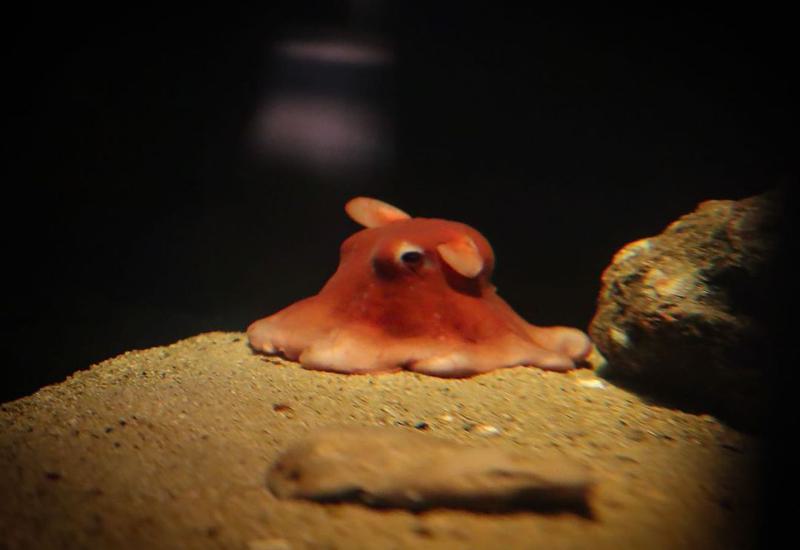
- Scientific name: Opisthoteuthis californiana
- Other name : Adorabilis
- Suitable for aquariums: Yes, but not home aquariums
- Minimum tank size: NA
Pearl is another one of Nemo’s new classmates, and Ted is her father. Their real-life species, flapjack octopuses, are considered so cute that scientists who first discovered them also gave them the nickname “adorabilis.”
You can keep some octopus species in your saltwater aquarium at home, but flapjack octopus are cephalopods that prefer the deep sea, so you can only see them in public aquariums like Monterey Bay.
17. Long-Nosed Butterflyfish – Tad and Phil
- Scientific name: Forcipiger flavissimus
- Other name : Forceps fish
- Suitable for aquariums: Yes
- Minimum tank size: 100 gallons
Tad and his father, Phil, make up the last parent-child duo that the clownfishes meet on Nemo’s first day of school.
Long-nosed butterflyfish, true to their name, have long, slender snouts adorned with yellowish-orange hues and accented by elegant black stripes.
They’re generally small in size and are known for being peaceful and quite hardy, making them a good choice for community saltwater tanks.
18. Spotted Eagle Ray – Mr. Ray
- Scientific name: Aetobatus narinari
- Other names : White-spotted eagle ray, Bonnet ray, Spotted duck-billed ray, Duckbill ray, Bonnet skate
- Suitable for aquariums: Yes, but not home aquariums
- Minimum tank size: NA
Mr. Ray is Nemo’s school teacher who sings a song about the sea on the first day of school, further sparking the young clownfish’s curiosity about the world.
In real life, spotted eagle rays like Mr. Ray are probably not as thrilled about being active. Unlike other rays that prefer deeper waters, they typically spend most of their days foraging or even burrowing on sandy sea floors for crustaceans, which make up most of their diet.
Their wingspan can reach over 3 meters or 11 feet long, though, second only to the manta ray. That’s truly enough space to ‘carry’ a bunch of young fish!
19. Flounder – Mr. Johannsen
- Scientific name: Suborder Pleuronectoidei
- Other name : Flatfish
- Suitable for aquariums: Yes
- Minimum tank size: 125 gallons
Mr. Johannsen is an elderly and grumpy flounder who lives underneath the sand near Mr. Ray’s class.
Just like Mr. Johannsen, real-life flounders only have their eyes on the right side of their body. Their coloring helps them blend seamlessly with their surroundings, making them challenging to spot.
20. Triggerfish – Kathy
- Scientific name: Balistidae
- Other name : NA
- Suitable for aquariums: Yes
- Minimum tank size: 70 for smaller species, up to 500 for larger species
Kathy is Nemo’s bucktoothed classmate who calls out Nemo when he swims to touch the diver’s boat.
She belongs to one of the 40 species of Triggerfish, notable for their unique appearance. They can be kept in large home aquariums with plenty of swimming space. They can be pretty aggressive, though, especially the females.
21. Blue Dot Jawfish
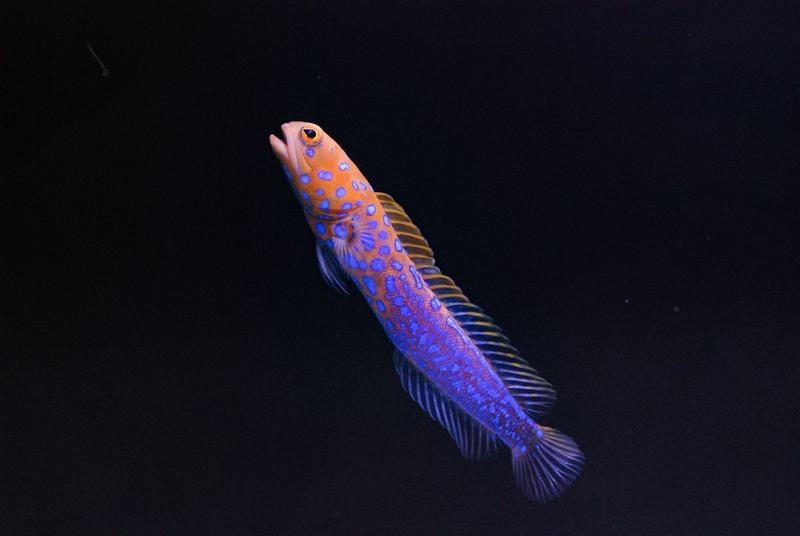
- Scientific name: Opistognathus rosenblatti
- Other names : Blue-spotted jawfish
- Suitable for aquariums: Yes
- Minimum tank size: 30 gallons
On Nemo’s first day of school, there’s a brief scene where they watch a mother fish dropping off her kids for school – literally dropping them off, as they’re right inside her mouth.
While they don’t look exactly the same, we’re convinced that this fish is based on the blue dot jawfish. Just like in the movie, they’re mouthbrooders, which means they carry their eggs in their mouth. However, in real life, it’s actually the male jawfish that does this, not the female.
22. Anglerfish
- Scientific name: Lophiiformes
- Other name : NA
- Suitable for aquariums: No
- Minimum tank size: NA
The anglerfish scene in Finding Nemo is one of the most memorable scenes in the entire movie.
Although the anglerfish featured in the movie isn’t a real species, there is some semblance of reality there.
One, anglerfish truly live in the dark depths of the ocean. And two, female anglers really do have bioluminescent lures–a long, rod-like structure extending from their head that emits a faint glow to entice their prey.
23. Jellyfish
- Scientific name: Scyphozoa
- Other name : Sea jellies
- Suitable for aquariums: Yes, ideally species-only
- Minimum tank size: 10 gallons
Unbeknownst to Marlin and Dory, a whole swarm of jellyfish was living above the large trench they were told to swim through.
That said, real jellyfish don’t use electricity to sting their prey, unlike in the movie. Instead, they would use a poisonous toxin to incapacitate and even kill.
Take note that while you can keep jellies in your home aquarium, the ones that appeared in the movie aren’t real.
24. Barracuda
- Scientific name: Sphyraena
- Other name : Barra, Great barracuda, Commerson’s sea pike,
- Suitable for aquariums: Not recommended
- Minimum tank size: 1,000 gallons
The barracuda is the predator that attacked Nemo’s family when he was just an egg.
But while real-life barracudas are truly ferocious creatures, there are a few things that the film got wrong about them. Barracudas don’t typically live near coral reefs. They also don’t eat eggs and don’t usually go for small fish like clownfish either.
25. Blue Whale
- Scientific name: Balaenoptera musculus
- Other name : Rorquals
- Suitable for aquariums: No
- Minimum tank size: NA
The blue whale makes a brief but very memorable appearance in the movie. Blue whales are marine mammals famous for being the largest animals in the world.
Despite their size, they only eat tiny creatures. Their “teeth,” known as baleen plates, resemble the bristles of a comb. When they feed, they simply take in water and force it back out through their baleen plates, effectively filtering it for organisms like krill and plankton.
However, it’s worth noting that their mouths and blowholes aren’t actually connected in real life, so there’s no way the events of the film would’ve played out that way if it were to truly happen.
Conclusion
And there you have it for 25 of the most iconic characters from Finding Nemo! There were a few other minor characters that appeared in the film, such as dolphins, lobsters, swordfish, and moonfish.
Ultimately, underneath all the vibrant characters and crazy adventures, this iconic movie is a story about friendship, family, and love. Specifically, a father’s love that’s willing to face all dangers and even cross oceans – all in the hopes of finding Nemo and bringing him back home.
